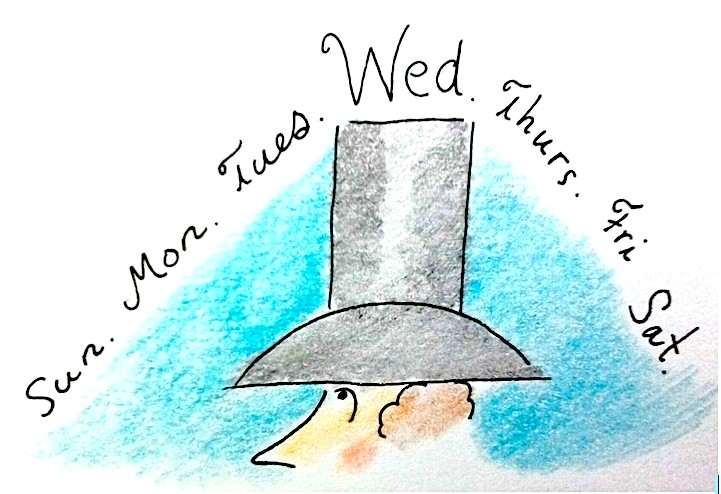A Look At The New Yorker’s 25th Anniversary Issue
 This morning I grabbed a bound volume of New Yorkers off the shelf that includes the magazine’s 25th anniversary issue.
This morning I grabbed a bound volume of New Yorkers off the shelf that includes the magazine’s 25th anniversary issue.
Hmmmm, I thought to myself…1950. interesting time for the magazine, with the semi-modern wave of cartoonists (Saxon, Weber, Lorenz, Miller, etc.) yet to arrive.
If we remember that Harold Ross (the magazine’s founder and editor until his death in December of 1951) considered the anniversary issues showcases, this is an excellent opportunity to take stock of what was then (most of) the best of the best the magazine could offer. The issue doesn’t disappoint.
Steinberg, though on the scene for five years (and already having had a cover) was not yet Steinberg. In the issue he’s represented by a “Spot” drawing. William Steig had yet to transition to his “other” style — titled drawings with flowing lines. In this issue he’s represented by yet another in his series of “Everyday Histrionics.”
 James Thurber has a written piece (as does his buddy, E.B. White), but with Thurber’s eyesight finally taking him out of his graphic pursuits, we are treated to a spot drawing, not a cartoon — but of course it’s a fabulous spot drawing.
James Thurber has a written piece (as does his buddy, E.B. White), but with Thurber’s eyesight finally taking him out of his graphic pursuits, we are treated to a spot drawing, not a cartoon — but of course it’s a fabulous spot drawing.
Peter Arno, four years past the midway point of his long run at the magazine, has a full page drawing as does the other master of the full page, Gluyas Williams. Other veterans here include George Price with the drawing shown below. The drawing is “fun” but his use of “waddle” (or more precisely, his idea-writer’s use of the word “waddle”) seals the deal.
Charles Addams’s Uncle Fester makes an appearance. He’s waving for a car to pass him on a narrow side-of-the-mountain roadway. A truck, coming from the opposite direction, is barreling around the bend (we know it’s not going to turn out well for the car about to pass Fester).
Other New Yorker masters represented in the issue: Otto Soglow, Syd Hoff, Perry Barlow, Whitney Darrow, Jr., Alain, Garrett Price, Richard Decker, Robert Day, Carl Rose, and Chon Day. Missing from the issue is one of the magazine’s super stars, Helen Hokinson (in a document prepared by the magazine’s editorial department, Ms. Hokinson and Peter Arno were listed as The New Yorker‘s top two artists). Ms. Hokinson perished in a plane crash in November of ’49.
I’d have to guess that 1950 New Yorker readers, looking at this issue, felt pretty darn good about the work they’d seen.


